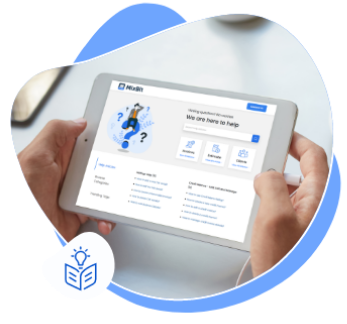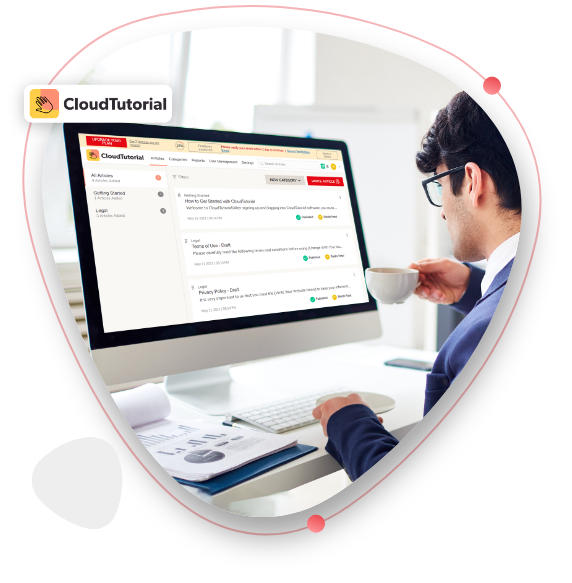When an employee withholds information intentionally and doesn’t share it with others, that’s called information hoarding. A person often does it to get the credit for the work or personal gain.
Many complex reasons drive individuals to hoard information. But, whatever it may be, the result is the same – Loss of productivity in the workplace. To know more about it and how to stop hoarding information in your company, you can continue reading this blog.
Table of Content
What is Information Hoarding?
Information Hoarding is malpractice wherein employees hide, hoard, or simply hold back information from coworkers or management in their organization.
At its core fundamental, information hoarding can lead to the creation of a lot of functional issues due to the overdependence on a single employee.
To better understand the drawbacks of information hoarding, consider this –
You’re an employer at a reputed company and have the responsibility of two different verticals under you. But you do not have access to the data of these verticals and since this particular employee always produces the data for the projects, accessibility has never come into question.
However, due to some unforeseen situation, he is no longer able to access the data- it may be due to a hard drive malfunction, or hardware being stolen, or some other reason.
The crux of the situation is that the data only a particular employee had access to is now unavailable for other members of the office.
Not only does this lead to stalling of various projects, but it can also create voids in knowledge transfers among coworkers which are not favorable in any business.

Want to Help Your Employees Find Information Instantly?
CloudTutorial makes it easy for your employees to find specific information so your energy is spent on work that matters!
Signs Your Company has an Information Hoarding Problem

Although it is hard to pinpoint exactly whether or not a company hoards information, there are a few telltale signs that if are in practice at your firm, should raise alarm bells.
- Overdependence on Certain Individuals
This might be regarded as a good thing in the setup of most organizations but this is a major telltale sign when it comes to information hoarding. - Trying to Bridge the Information Gap When Employees Leave
Without a system in place that retains the information gained by employees while interacting with clients/customers/coworkers or while working on certain projects, you’re in for a disaster.
If you find information voids and often struggle to fill in knowledge gaps when employees leave, your workplace is already suffering from information hoarding. - Solutions via email threads rather than on the cloud
Not only is this way of going about business inefficient, but it also is hard to maintain when individual project files are distributed throughout the hierarchy of the organization.
How to Stop Hoarding Information?
Now that we understand the nuances of hoarding information, let us try and address the choices we can make to better set up our organizations so that this does not occur.
Bring a Culture Change That Sticks:
See, I can give you all the tools, tips, and tricks but nothing would work if you do not set up the right culture in your company.
The problem of information hoarding will lose its power once you shift from a culture of hoarding knowledge and experience a sustainable and thriving culture of sharing knowledge.
How to start?
- Start with thoroughly examining your work culture and understand the channels and tools you need to maintain a free flow of communication and knowledge.
- Learn from other teams and departments where collaboration and communication is the norm.
- Accept that not everyone in your company will be great at collaboration and communication.
- Extend learning, training, and development opportunities to instill the practice of good communication and sharing knowledge.
- Give access to everyone in the department: Ensure that no one individual has the access to all the files of a particular project.
- Shift to technologies and knowledge sharing systems: Rely on the cloud and other servers to centrally store the data rather than it being stored remotely.
Use CloudTutorial To Encourage Knowledge Sharing Among Employees
CloudTutorial will help your business create knowledge bases so that your employees can access it along the course of their tenure rather than overburdening them with local information.
Our software helps in creating an equilibrium between the amount of company information and knowledge management of personal data held by hoarders – coworkers, a group, and their supervisors at the companies. It will encourage employees to contribute their information to the knowledge bases.
Not only this, but it will prove to be the best way to transfer knowledge from one employee to another employee. CloudTutorial will build a company culture of self-reliance. Have some general queries and questions in mind? Don’t worry; we have answered the most common questions asked from the readers in the FAQ section.

Looking For a Knowledge Base Software?
Check out CloudTutorial. Create articles, FAQs, Manuals, Guides and manage everything from one place!
- Create A Hierarchy of Information Access: This is done to minimize the influence that individuals/hoarders have on the smooth functioning of the organization. Segregating access ensures collaboration between coworkers for access on the cloud; the absence of anyone individual not affecting the entire process.
- Switching Information Storage To A Cloud Database: Information is available globally to each employee of the organization rather than individual remote access of the same.
- De-incentivizing Individuality On Projects: Knowledge hoarding is more likely when an individual employee works on a particular project rather than having the support of team members. Hence, it is important to promote a team culture in lieu of individuality.
Yes. A knowledge-sharing software is one of the most effective tools to create a network that is efficient and allows employees to access information on an organizational level. It also helps to minimize the costs and efforts that go into training new employees and trying to fill in information gaps as and when they arise.
Go for CloudTutorial. It is an easy to use platform that segregates information into categories and sub-categories, allowing employees to easily access the available data and not be overwhelmed by its sheer abundance.
Just type in your query search word and the AI-powered search algorithm will quickly display all the relevant data related to the search word.
A knowledge sharing system acts as an effective means of collaboration between employees. Since everyone has access to the data instantly, it will minimize the inefficiency due to miscommunication among employees. They won’t have to depend on a colleague for it. The company’s productivity will improve as a result.
So, when you decide to create an internal or external knowledge base platform to answer your employees and customers queries simultaneously, then I recommend adopting CloudTutorial. You can start your FREE trial with this CloudTutorial and know it helps your business to manage all the important data.
Try it out before you decide.
Create a test article NOW!
Using this tool, all you have to do is add your first test article and see how it looks. Now, you don’t have to sign-up or login into CloudTutorial software just to check how your first article appears.

